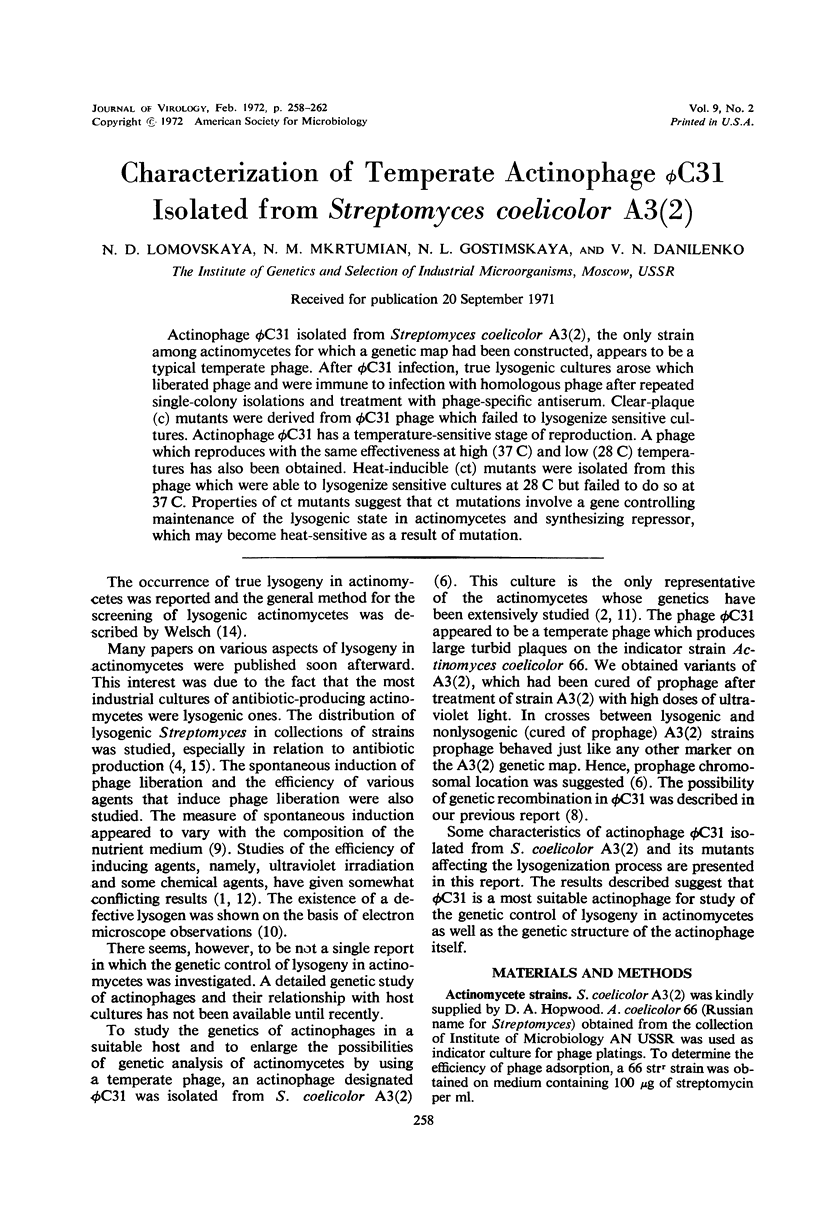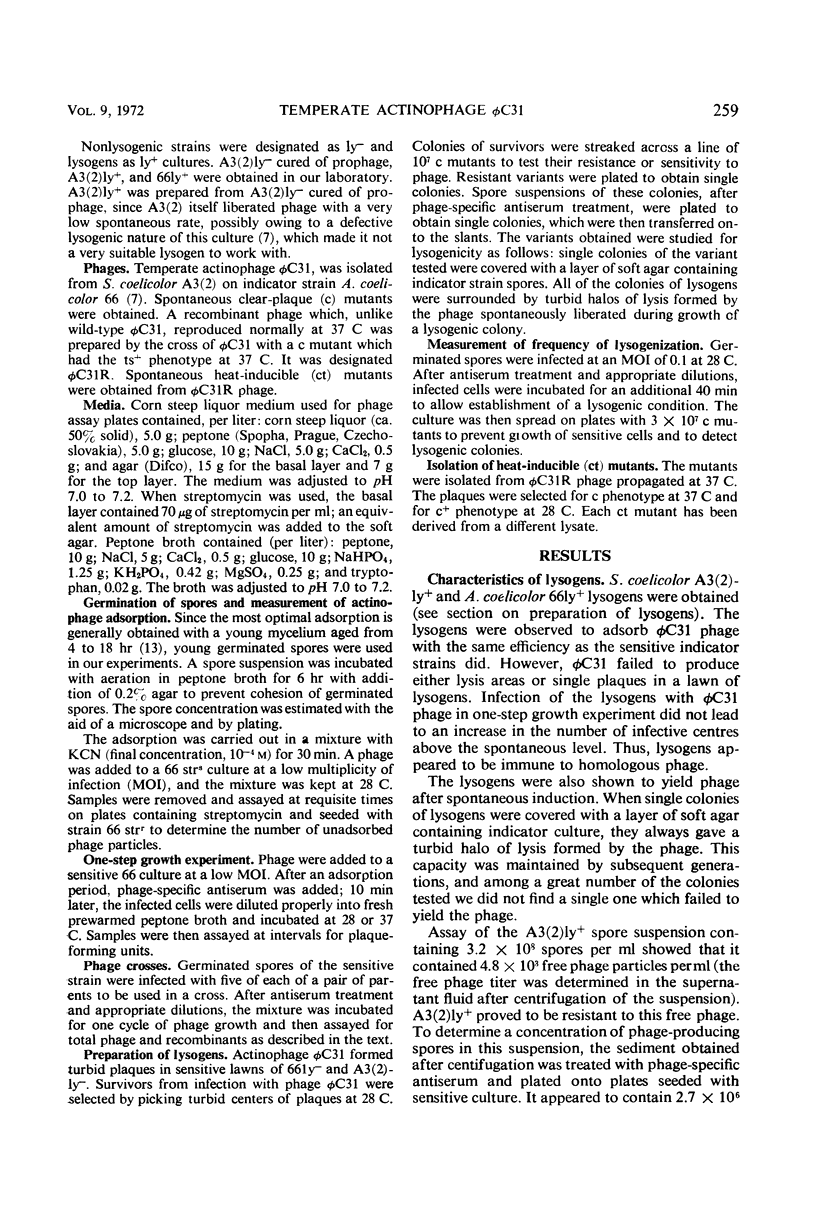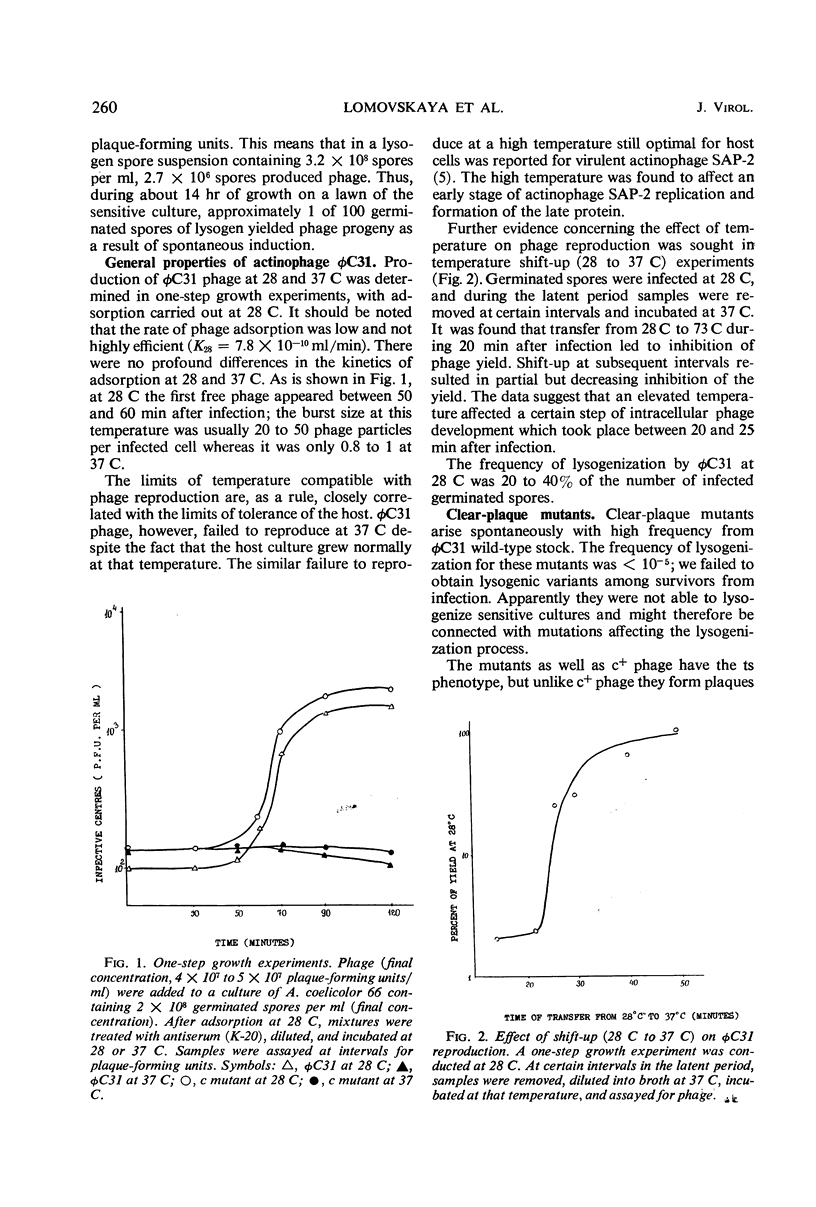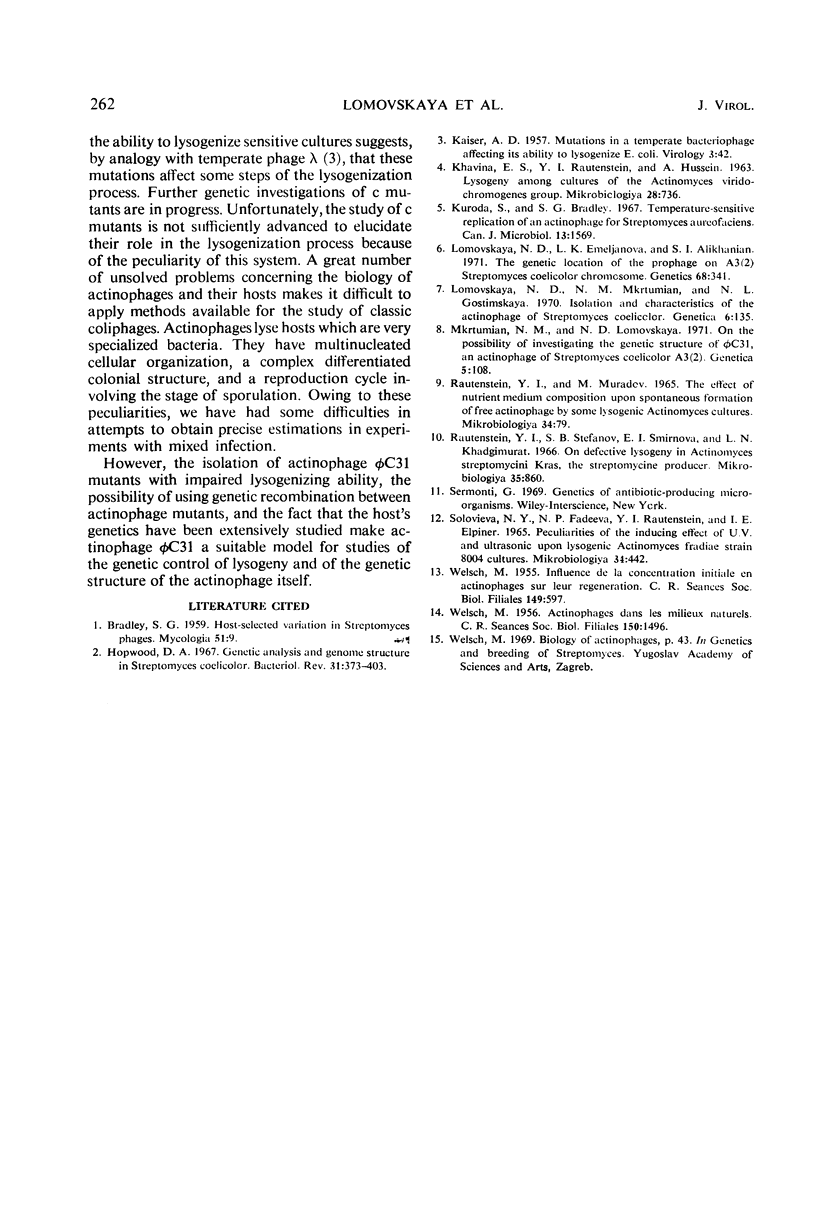Abstract
Actinophage φC31 isolated from Streptomyces coelicolor A3(2), the only strain among actinomycetes for which a genetic map had been constructed, appears to be a typical temperate phage. After φC31 infection, true lysogenic cultures arose which liberated phage and were immune to infection with homologous phage after repeated single-colony isolations and treatment with phage-specific antiserum. Clear-plaque (c) mutants were derived from φC31 phage which failed to lysogenize sensitive cultures. Actinophage φC31 has a temperature-sensitive stage of reproduction. A phage which reproduces with the same effectiveness at high (37 C) and low (28 C) temperatures has also been obtained. Heat-inducible (ct) mutants were isolated from this phage which were able to lysogenize sensitive cultures at 28 C but failed to do so at 37 C. Properties of ct mutants suggest that ct mutations involve a gene controlling maintenance of the lysogenic state in actinomycetes and synthesizing repressor, which may become heat-sensitive as a result of mutation.
Full text
PDF




Selected References
These references are in PubMed. This may not be the complete list of references from this article.
- Hopwood D. A. Genetic analysis and genome structure in Streptomyces coelicolor. Bacteriol Rev. 1967 Dec;31(4):373–403. doi: 10.1128/br.31.4.373-403.1967. [DOI] [PMC free article] [PubMed] [Google Scholar]
- KAISER A. D. Mutations in a temperate bacteriophage affecting its ability to lysogenize Escherichia coli. Virology. 1957 Feb;3(1):42–61. doi: 10.1016/0042-6822(57)90022-3. [DOI] [PubMed] [Google Scholar]
- Kuroda S., Bradley S. G. Temperature-sensitive replication of an actinophage for Streptomyces aureofaciens. Can J Microbiol. 1967 Dec;13(12):1569–1575. doi: 10.1139/m67-207. [DOI] [PubMed] [Google Scholar]
- Lomovskaya N. D., Emeijanova L. K., Alikhanian S. I. The genetic location of prophage on the chromosome of Streptomyces coelicolor. Genetics. 1971 Jul;68(3):341–347. doi: 10.1093/genetics/68.3.341. [DOI] [PMC free article] [PubMed] [Google Scholar]
- Rautenshtein Ia I., Muradov M. Vliianie sostava pitatel'noi sredy na spontannoe obrazovanie svobodnogo aktinofaga nekotorymi lizogennymi kul'turami aktinomitsetov. Mikrobiologiia. 1965 Jan-Feb;34(1):79–85. [PubMed] [Google Scholar]
- Solov'eva N. Ia, Fadeeva N. P., Rautenshtein Ia I., El'piner I. E. Osobennosti indutsiruiushchego éffekta ul'trafioletovykh luchei i ul'trazvukovykh voln na lizogennuiu kul'turu Actinomyces fradiae shtamm 8004. Mikrobiologiia. 1965 May-Jun;34(3):442–450. [PubMed] [Google Scholar]
- WELSCH M. Actinophages dans les milieux naturels. C R Seances Soc Biol Fil. 1956;150(7):1496–1499. [PubMed] [Google Scholar]
- WELSCH M. Influence de la concentration initiale en actinophages sur leur régénération. C R Seances Soc Biol Fil. 1955 Mar;149(5-6):597–600. [PubMed] [Google Scholar]


